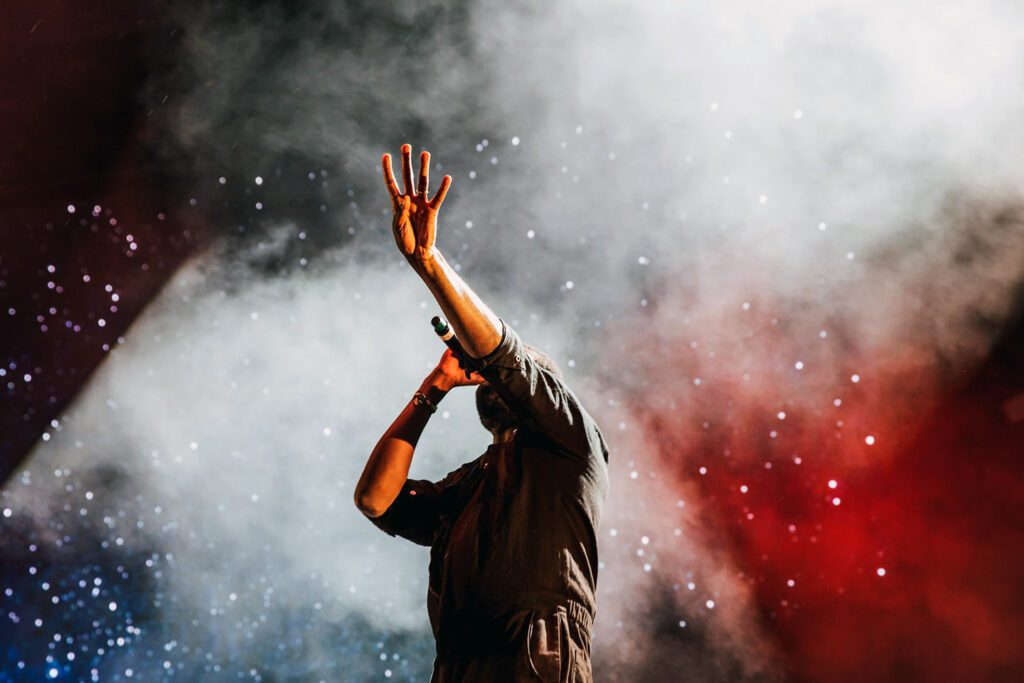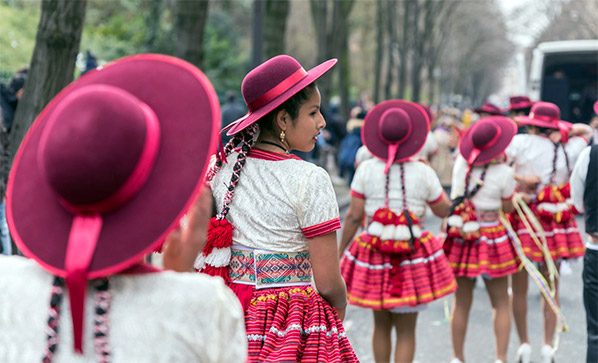Here’s the thing about f/2.8: it’s a good aperture for shooting in low light and indoors but you’re going to need a higher ISO to get a fast shutter speed.
From my experience, when using ISO 1000 with an aperture of/2.8 inside my home with artificial indoor lighting, I usually get a shutter speed of 1/30th to get a proper exposure.
My hands are steady enough for that kind of shutter speed but I realize that not everyone is like me.
Generally, f/2.8 is considered a fast lens and it’s suitable for shooting in poorly lit areas. To give you an idea, I also use an f/4 lens when shooting weddings, which is slower compared to an f/2.8 lens.
This aperture is mostly found in zoom lenses. And having a slower aperture is the trade-off for having a more versatile lens that’s good for all-around shooting. The Canon EF 24-70mm f/2.8L II is a great portrait lens for my Canon 5D Mark II and is my favorite Canon zoom lens.

If you’re going to be using this lens for low light situations, you need to make sure your hands are steady to avoid camera shake.
If you have higher-end cameras such as the Canon EOS RP, Sony A7 III, and Fujifilm X-T3, you don’t have to worry about using higher ISOs because they have a great high ISO performance.
Most mirrorless cameras have in-body image stabilization that can reduce camera shake when using slow shutter speeds. Using your camera’s built-in flash or an external flash is also ideal when using f/2.8 indoors.
What is the meaning of f2.8 aperture?
F/2.8 means you allow more light into the camera than f/4.0 or higher. The f-number is a ratio of focal length to the diameter of the aperture.
The “f” stands for the focal length of the lens, which is the distance between the lens and image plane when it is focused on infinity. The lower the f-number, the more light that gets into your camera.
Is an aperture of f/2.8 important?
Yes, it is. F/2.8 is a wide aperture that lets in a lot of light and can be used for many different types of photography. It can also improve the quality of your images and make them sharper.
Although, you might struggle a bit when shooting indoors especially if you have an older camera. Since you need to bump up the ISO to use the right amount of shutter speed.
And when it comes to older cameras like my Nikon D90, shooting past ISO 800 can get quite noisy.
That’s why I use an external flash when shooting with an f/2.8 lens or replace it with a fast prime lens to get proper exposure.

When should I use an f/2.8 aperture?
If you need to capture more light when shooting in dim locations such as concerts, ceremonies, and other indoor locations then f/2.8 is your friend. It lets you use faster shutter speeds compared to a slower lens. This aperture is also ideal for blurring the background.
For example, if you want to take a portrait of someone standing against an interesting background, then use an f/2.8 lens to blur out everything else in the picture except for your subject.
Also, using an f/2.8 aperture improves the quality of the images. So stopping your lenses down to f/2.8 from f/1.4 can greatly improve your image by eliminating chromatic aberration (CA), and gaining overall sharpness and contrast.
This aperture is also ideal to use for fast-moving subjects and action shots. Since it has a larger depth of field compared to f/1.4 that allows you to get easier focus when the subjects are moving.
Can I get good bokeh with an f/2.8?
Yes, f/2.8 can get good bokeh. The depth of field is still not as shallow as it is with a wider aperture like f/1.4 or f/1.8 but it can still create a nice blur effect when shooting portraits.
In order to get a more pleasing bokeh make sure that your subject is far from his/her background and that you’re shooting as close to your subject as possible.
The photos below are great examples of how to achieve good bokeh with an f/2.8 lens. These photos are taken with Canon EF 24-70mm f/2.8L and Sony 16-55mm f/2.8 G lenses.



How many stops between f/2.8 and f/4?
The difference between the two apertures is one stop of light. F/2.8 allows more light to reach the camera’s sensor than f/4, which means that your pictures will be brighter at f/2.8.
But f/4 has a greater depth of field which is suitable for getting sharper images and when you want nearly everything in focus.

f2.8 vs f4 in low light
F/2.8 is generally better in low-light settings because it has a wider aperture that lets more light into the lens. It has a one stop of light advantage over an f/4 lens.
Using f/2.8 when shooting indoors also means you need to shoot with a lower ISO and faster shutter speed than shooting with f/4.
What is the difference between f/1.8 and f/2.8?
The difference between the two apertures is about 1 and 1/3 stop of light. That’s a huge difference when shooting in low light conditions. F/1.8 allows in twice as much light as f2.8.
When it comes to bokeh and background blur, f/1.8 is going to be better. It will have a shallower depth of field than f/2.8, allowing more of the background to be out of focus in your shot.
However, shooting at f/2.8 can avoid some issues when shooting wider apertures such as vignetting, softer focus, and chromatic aberration (CA).
Shooting at f/2.8 is also ideal for taking photos of two people and keeping them both in focus.

Emma Lucy is the Founder & CEO of Emma Lucy Photography. She has over a decade of experience shooting weddings and other intimate events. She also tests the latest digital camera bodies, lenses, analog cameras, and other gear from Canon, Nikon, Sony, and other camera brands. She is From London and currently lives in the United States of America, where she spends most of her time as a self-employed professional photographer and writer.
